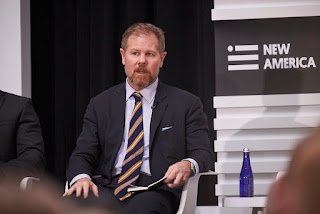75 years European Defence. Anything to celebrate?
Bring on the cake and candles: on 11 August 2025, it is 75 years since Winston Churchill called for the immediate creation of a unified European Army in Strasbourg; subject to European democratic control and in close cooperation with the United States and Canada.
The never fully ratified treaty establishing the European Defence Community provided for a European security council (the Commissariat) and the formation of a European armed force of 40 divisions with a clearly defined division of tasks and safeguards for the powers of national governments and parliaments, such as conscription or the recruitment of professional soldiers.
A common defence budget, military disciplinary law, international barracks, and training are regulated in the treaty in a common European Defence Union. The deployment in relation to the United Nations, NATO, and disaster relief is also clearly elaborated in the text.
As its main objective, the treaty mentions nothing less than the maintenance of international peace and security, without harming social progress and protecting common moral values.
That this was not a trial balloon is evident from the fact that the complete, detailed treaty establishing the European Defence Community was actually ratified by the Netherlands Parliament in 1954 at the proposal of our government.
 To strengthen cooperation and efficiency in Europe, it is still highly necessary to better bundle forces and resources when it comes to peace and security. Harmonize and simplify the rules for cross-border military cooperation. Currently, complex rules limit common matters such as the secure exchange, production, and purchase of ammunition, spare parts, border crossings, infrastructure use, and medical cooperation. Better coordinated material logistics also stimulates international industrial innovation and cooperation and counteracts waste and fragmentation.
To strengthen cooperation and efficiency in Europe, it is still highly necessary to better bundle forces and resources when it comes to peace and security. Harmonize and simplify the rules for cross-border military cooperation. Currently, complex rules limit common matters such as the secure exchange, production, and purchase of ammunition, spare parts, border crossings, infrastructure use, and medical cooperation. Better coordinated material logistics also stimulates international industrial innovation and cooperation and counteracts waste and fragmentation.
Given the shift of American focus to Asia and the Middle East, it is urgent that the EU can independently manage threats. Secure a strong, global European security structure with a European Security Council that can act quickly through pre-mandating. This council must be able to operate flexibly based on its own objectives but in close coordination with partners such as the US. In addition, strengthening the European weight within the NATO command structure is crucial to increasing Europe's position and influence within NATO.
In short: many of the bottlenecks and problems that European member states are facing today in 2025 call for solutions in line with a detailed treaty that has been lying in a drawer for almost 75 years.
Who will blow out the candles and cut the cake at the European operational headquarters?
Original in Dutch, translated into English by Gemini AI
Text Richard J. de Graaf (47)
Member Eurodefense Nederland
Secretary of the Defence-network of the Netherlands social democratic party PvdA
The never fully ratified treaty establishing the European Defence Community provided for a European security council (the Commissariat) and the formation of a European armed force of 40 divisions with a clearly defined division of tasks and safeguards for the powers of national governments and parliaments, such as conscription or the recruitment of professional soldiers.
A common defence budget, military disciplinary law, international barracks, and training are regulated in the treaty in a common European Defence Union. The deployment in relation to the United Nations, NATO, and disaster relief is also clearly elaborated in the text.
As its main objective, the treaty mentions nothing less than the maintenance of international peace and security, without harming social progress and protecting common moral values.
That this was not a trial balloon is evident from the fact that the complete, detailed treaty establishing the European Defence Community was actually ratified by the Netherlands Parliament in 1954 at the proposal of our government.
 To strengthen cooperation and efficiency in Europe, it is still highly necessary to better bundle forces and resources when it comes to peace and security. Harmonize and simplify the rules for cross-border military cooperation. Currently, complex rules limit common matters such as the secure exchange, production, and purchase of ammunition, spare parts, border crossings, infrastructure use, and medical cooperation. Better coordinated material logistics also stimulates international industrial innovation and cooperation and counteracts waste and fragmentation.
To strengthen cooperation and efficiency in Europe, it is still highly necessary to better bundle forces and resources when it comes to peace and security. Harmonize and simplify the rules for cross-border military cooperation. Currently, complex rules limit common matters such as the secure exchange, production, and purchase of ammunition, spare parts, border crossings, infrastructure use, and medical cooperation. Better coordinated material logistics also stimulates international industrial innovation and cooperation and counteracts waste and fragmentation.Given the shift of American focus to Asia and the Middle East, it is urgent that the EU can independently manage threats. Secure a strong, global European security structure with a European Security Council that can act quickly through pre-mandating. This council must be able to operate flexibly based on its own objectives but in close coordination with partners such as the US. In addition, strengthening the European weight within the NATO command structure is crucial to increasing Europe's position and influence within NATO.
In short: many of the bottlenecks and problems that European member states are facing today in 2025 call for solutions in line with a detailed treaty that has been lying in a drawer for almost 75 years.
Who will blow out the candles and cut the cake at the European operational headquarters?
Original in Dutch, translated into English by Gemini AI
Text Richard J. de Graaf (47)
Member Eurodefense Nederland
Secretary of the Defence-network of the Netherlands social democratic party PvdA



